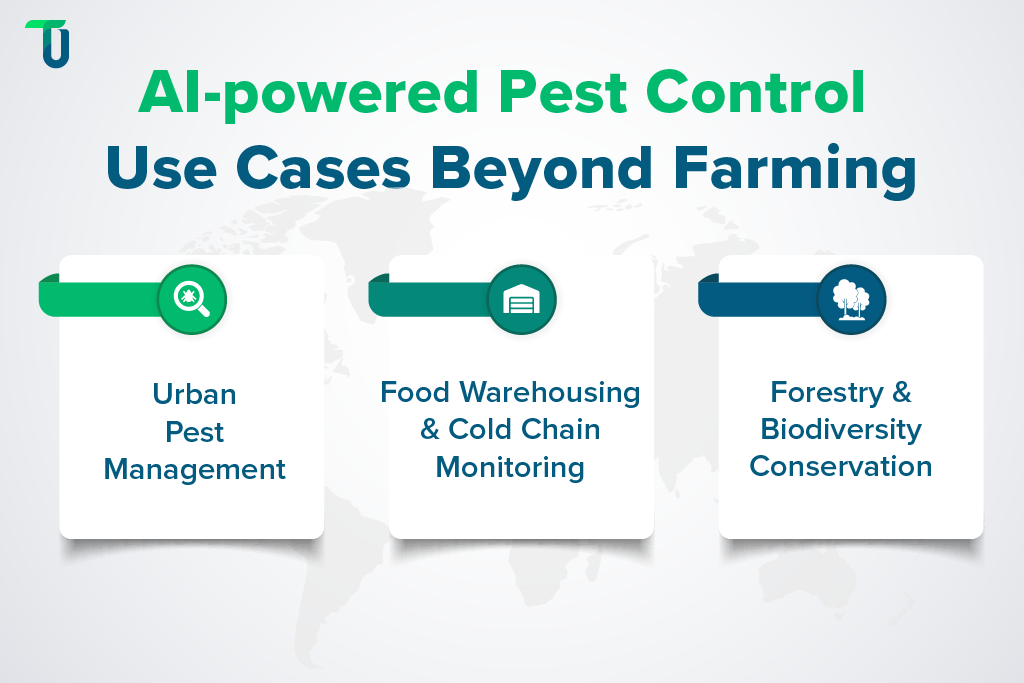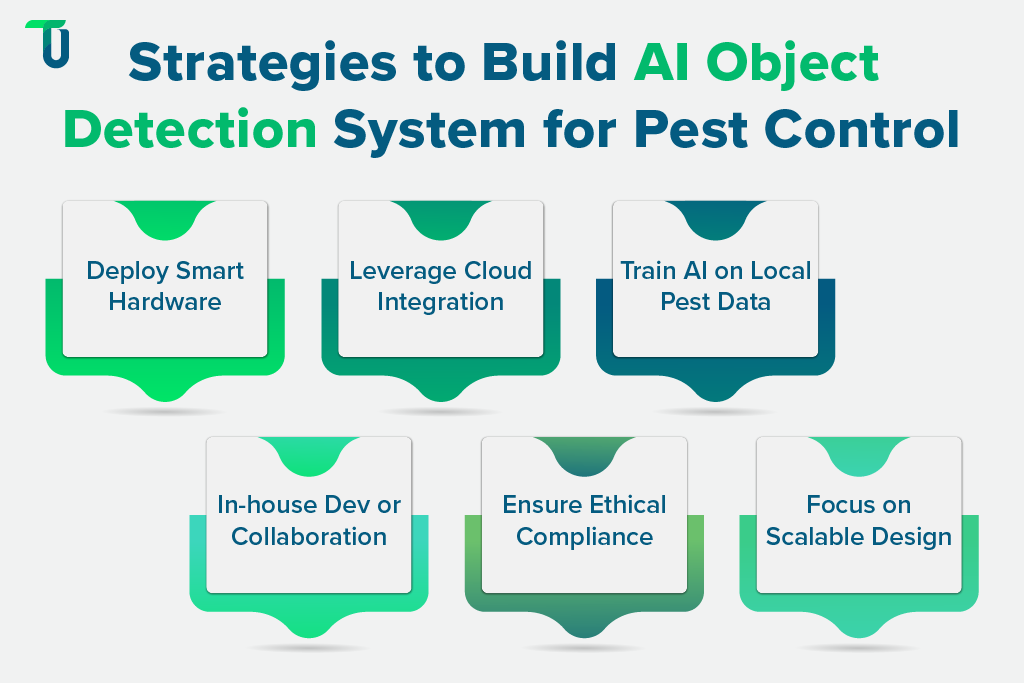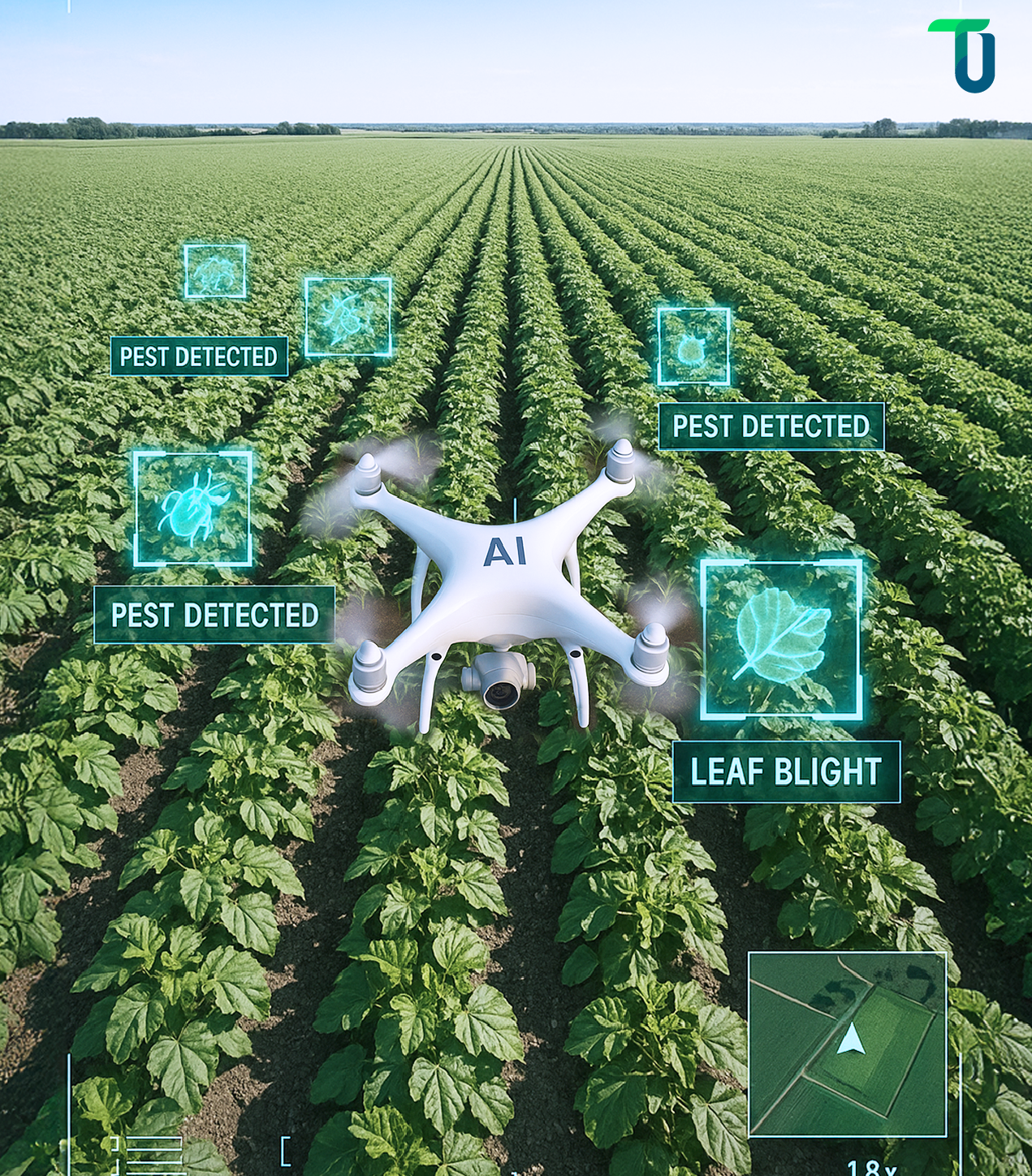What the C-Suite Needs to Know About AI in Agritech?
If you're a decision-maker in agri-business, here’s what matters:
- AI object detection isn’t a science project. It’s a working solution.
- You don’t need massive infrastructure to start. Just smart sensors, a trained model, and a cloud-connected dashboard.
- The ROI is real. Less pesticide. Healthier crops. Bigger yields—learn more about how AI-powered image recognition solutions deliver measurable ROI across industries.
With AI object detection, you're not just protecting crops. You’re building a smarter supply chain, reducing compliance risks, and unlocking data-driven insights that were once invisible.
Farms are becoming real-time decision systems. Those who lead the charge will dominate the market. Those who delay? They’ll fall behind in a landscape that rewards precision over scale.
You don’t need to know how the algorithm works. You need to know this: AI-driven pest control is becoming the standard.
And by the time it hits mainstream? It might be too late to catch up.
All You Need to Know About AI Object Detection
What It Is and How It Works in the Field?
AI Object Detection is exactly what it sounds like—machines that can “see” and recognize what’s happening around them. In farming, this means identifying pests, diseases, and crop health issues without relying on human assistance.
Here’s how it works:
- Cameras or drones scan the field.
- AI models process the footage.
- The system identifies pests, down to the species.
- You get alerts in real-time.
No lab tests. No waiting. No manual scouting. It’s fast, accurate, and always on.
From Cameras to Classifiers: The Tech Stack That Powers It
Behind the scenes, it’s a smart setup:
- Cameras and sensors collect images from fields or traps.
- Edge devices or the cloud processes them instantly.
- Pre-trained AI models recognize patterns, such as leaf damage, insect shapes, and movement.
- Dashboards show results. You make data-backed decisions on the spot.
And yes, it works in remote areas too. With the right setup, even low-connectivity farms can tap into this power.
Lead the Change, Don’t Chase It.
AI object detection is already delivering ROI in the field. Be the decision-maker who drives results. Talk to our AI experts today!
From Farm to Algorithm: Real-World Applications
No manual checks. No missed threats. Just crops that grow better, stronger, cleaner with the help of AI object detection. Let’s look at some real-world application of this innovative technology.
Case 1: FarmWise – Smart Weeding in California & Arizona
In the Central Coast of California and Arizona’s Imperial Valley, FarmWise deploys its Titan FT‑35 autonomous weeder—a robot that sees and removes weeds using computer vision and AI. It’s trained on millions of plant images to distinguish crops from weeds and surgically remove the latter—without chemicals or human labor. Farmers tell us these robots are rethinking sustainable weed control.
Case 2: Farmsense – Instant Insect Detection
Emerging from California, Farmsense installs “FlightSensor” optical units inside traps. As insects fly through, sensors capture “light curtains” and identify species at super-fast speeds. Traditional traps take days; Farmsense delivers alerts in real time. It’s precision pest management with no cloud delays.
Case 3: Blue River Technology’s “See & Spray” – AI That Knows the Difference
Owned by John Deere, Blue River Technology has engineered a game-changer: See & Spray, a machine vision system that uses deep learning and 30+ cameras to differentiate crops from weeds with remarkable accuracy. Rolled out on commercial farms across the U.S., it enables precise herbicide spraying—only where it’s needed. Farmers using See & Spray have reported up to 90% reduction in chemical usage, alongside better crop health and lower input costs.
Sustainability and ROI: Not Opposites Anymore
Let’s be honest—farmers are done choosing between sustainability and profits. With AI object detection, they no longer have to.
Decreasing Environmental Impact by Up to 80%
Spraying every inch of a field with chemicals isn’t just wasteful—it’s harmful. AI helps farmers spray only where pests are actually detected. That’s precision spraying. Fewer chemicals, fewer side effects, and healthier ecosystems. Greeneye Technology has reported that its AI precision spraying system can reduce herbicide usage by up to 78% on average, while also improving weed control efficacy compared to standard broadcast spraying methods.
Lowering Costs on Chemical Inputs and Labor
When pests are tracked in real time, farmers don’t need to blanket-spray or over-hire for monitoring. AI tools, such as smart traps and vision-based drones, reduce input costs by identifying exactly when and where to act. That means lower chemical bills and fewer field visits.
Measurable Yield Improvements
You don’t need to wait years to see ROI. AI-led farms that correctly implement AI object detection for pest control see yield boosts early. In some cases, even within one growing season. Healthier crops, fewer pest outbreaks, and faster decisions lead to real, measurable gains—fast.
Cross-Sector Use Cases: Beyond Agriculture
AI object detection isn’t just transforming farms. Its impact goes way beyond fields and furrows. Here’s how industries outside traditional agriculture are using it to solve real problems.

Urban Pest Management
Cities are crowded—not just with people but pests too. From rats to cockroaches, municipalities are turning to AI cameras and sensors to monitor infestations. This means less fogging, more targeting, and quicker response times. Urban health teams are no longer working blind.
Food Warehousing & Cold Chain Monitoring
Spoilage and pest intrusion cost food businesses millions. AI-powered visual monitoring tools are now used in cold storage and warehouses to instantly detect rodents or insects, preventing contamination before it becomes a crisis. One smart camera. Dozens of saved shipments.
Forestry and Biodiversity Conservation
Conservation teams are using AI to detect invasive species early and track endangered wildlife. This isn't theory—it's happening. AI vision tools monitor ecosystems in real time, triggering alerts when something’s off. This helps protect biodiversity with surgical precision.
Implementation Strategy: Building It Right from the Ground Up
Building an AI object detection system for pest control isn’t a plug-and-play job. It’s an ecosystem. And if you don’t get the basics right, scale will never happen. Here's how to do it right—and how TenUp Software Services can help you every step of the way.

Key Infrastructure: Drones, Edge Devices, and the Cloud
Let’s start with the obvious. You need eyes on the field—literally.
That means HD cameras on drones, IoT sensors, and edge devices that don’t just collect data—they process it instantly. This real-time capability ensures pests are detected before they spread.
But hardware alone won’t cut it. You need cloud integration to centralize insights, sync with dashboards, and trigger alerts.
TenUp Software Services can help you architect this AI-optimized pipeline—right from device-level AI to robust cloud backends using Azure, AWS, or hybrid models.
Training AI Models on Local Pest Datasets
No two farms are the same. A model trained on European moths won’t help a farmer in California’s Central Valley.
To make detection truly accurate, you need localized data—images of pests from specific regions, crops, and seasons. This is where model retraining and fine-tuning come into play.
With TenUp’s AI engineering expertise, we can help collect, label, and train detection models that learn from hyperlocal images—making your system smarter with every capture.
Also Read: Different methods or techniques to label or annotate images.
Partnering with AgriTech Vendors or Going In-House?
Not every organization needs to build from scratch. The real question is—build, buy, or partner?
- Building in-house gives you control.
- Partnering gets you to market faster.
- Buying a proven platform lowers risk.
Bridge both worlds. TenUp can co-engineer AI solutions with AgriTech providers and also develop end-to-end proprietary systems for enterprises looking to own their AI stack.
Regulatory + Ethical Considerations for AI in Ecological Zones
If your AI touches a crop or an ecosystem, it must respect laws, privacy, and sustainability standards.
That means:
- Clear consent if cameras are on private land.
- Compliant data handling across regions (think GDPR, DPDP).
- Transparent AI decisions, especially in biodiversity-sensitive zones.
TenUp can help build ethical, explainable AI systems that comply with global data and environmental standards.
Lessons in Scaling from Experimental to Operational
Early adopters have cracked a few key truths:
1. Local data matters. Pretrained models don’t work everywhere—regional retraining is a must.
2. Speed wins. Delayed detection = crop damage. Edge computing makes real-time responses possible.
3. Partnerships pay off. Farmers, tech providers, and AI engineers must co-create for real results.
TenUp Software Services has the capabilities to help agri-tech firms scale from MVPs to enterprise-ready AI systems, with modular architectures and continuous model optimization.
What’s Next: The Future of AI-First Pest Control
AI object detection isn’t the future. It’s already reshaping pest control today. But what’s coming next? Even smarter, faster, and hyperlocal systems that will change how we farm forever.
Predictive Pest Management via AI + IoT
Today, we detect pests when they show up. Tomorrow, AI will predict their movement before they arrive.
With IoT sensors feeding real-time weather, soil, and crop data into AI models, farmers will soon know which pest will appear, when, and where. That means:
- Preventive action before infestations.
- Lower pesticide dependence.
- Zero crop surprise.
TenUp is already working on AI models that combine multi-source data to power predictive insights.
Hyperlocal Farming Decisions via Real-Time Detections
AI won't just think globally. It’ll act locally.
Pest management decisions will get granular—down to a specific plot, crop row, or microclimate. Farmers will be able to:
- Spray only affected zones.
- Choose treatments suited to that micro-region.
- Monitor localized pest resistance.
With edge-enabled AI systems, TenUp can empower farms to make real-time, GPS-stamped pest control decisions.
Sustainable Agriculture That’s Actually Scalable
AI object detection is no longer just about saving crops. It’s about saving ecosystems while still improving yields.
Here’s what the future looks like:
- Up to 80% reduction in chemical use
- Healthier soil and biodiversity
- Better ROI with lower input costs
And it’s not limited to large farms anymore. With falling costs of sensors and smarter, mobile-first apps, even smallholder farmers will have access to enterprise-grade pest intelligence.
The farms of the future won’t be chemical-first. They’ll be vision-led, AI-informed, and environmentally conscious. And those who get on board now? They’ll lead that future.
From Code to Crops: Why TenUp Is Your AI Partner in the Field
The shift to AI-first farming isn’t optional anymore. It's inevitable.
However, here’s the thing that most agri-tech innovators miss—AI object detection doesn’t work out of the box. It requires the right data, trained on the correct pests, and optimized for real-time performance at the edge. That’s where most pilots fail. And where TenUp steps in.
We don’t just build AI.
We engineer end-to-end intelligence—from data pipelines and computer vision models to deployment-ready platforms that farmers can actually use. Whether it’s detecting leaf blight from drone footage or identifying insect behavior with smart traps, we turn proof-of-concepts into production-grade AI systems.
Because the future of farming needs more than vision.
It needs vision with precision.
Ready to bring AI to your fields? Let’s build it together—from soil to silicon.
Let’s Turn Your AgriVision into Action
Partner with TenUp to build AI-powered pest control solutions that are fast, field-ready, and built to scale.
Frequently asked questions
How much data is necessary to train an AI pest-detection model to exceed 80 % accuracy?
According to a recent webinar FAQ, you can achieve >80 % detection accuracy with around 500–1,000 well-labeled images, though results improve with more diverse samples.
What is the typical cost to implement an AI object detection system for pest control on a farm?
Entry-level AI pest detection systems (basic cameras + analytics) start around $30,000, while advanced setups with drones, edge computing, and real-time cloud dashboards range from $100,000–$300,000+, depending on farm size and complexity.
What hardware do I need for real-time AI pest detection in the field?
At minimum: AI-capable cameras or drones, edge-computing devices (to run models on-site), and IoT sensors (for environmental data). These components work together to scan, process, and transmit detections 24/7.
How accurate are AI pest-detection models under varying lighting and weather conditions?
Modern AI pest-detection models (e.g., InsectNet, YOLOv5) achieve >95% accuracy even in challenging conditions—low light, glare, or rain—thanks to advanced deep learning and diverse training datasets.
What are best practices for labeling and annotating datasets for pest-detection models?
Accurate image annotation is crucial: label every pest instance at multiple angles, lighting conditions, and growth stages. Use annotation tools that support bounding boxes and semantic masks to maximize model performance.
Can AI object-detection systems distinguish between visually similar pest species?
Yes—advanced AI models like InsectNet and YOLOv8-Agri can differentiate even closely related pests (e.g., aphids vs. thrips) with >90% accuracy, using fine-grained visual cues (wing veins, body segmentation) and abstain when uncertain to reduce false positives.

